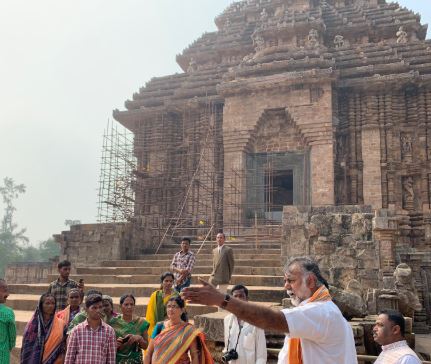Pinaki Rath
The time for the ‘crisis-begets-reform’ hypothesis is ripe. Has Odisha’s tourism industry finally got its chutzpah moment with the pandemic? A rethinking on international tourism through a “Look East” policy with focus on Religious Tourism is likely and its benefits will be well within our reach. Seeds have been planted with the opening of the air routes to Bangkok and Kuala Lumpur. Here is a small, big step forward.
History is replete with lessons left behind by our ancestors. Adventure-seekers with high culture quotient, they were paragons of soft power, sweeping through Southeast Asia like a whirling dervish. Zealous about propagating both Buddhism and Hinduism, our ancestors busted the myth that Hinduism is non-missionary. They negotiated their way through the waves, the choppy waters, and reached far and wide with rare grit and determination. They left their stamp on many parts of wider Asia.
Keling or Kling is a word still used in the Malay peninsula to denote an Indian – a direct reference to Kalinga. The National Museum of Singapore has records to show that the people from Kling in India as one of the earliest settlers in the region. Our ancestors, seafarers, introduced elements of their culture to all those with whom they traded.
It is a matter of great pride that the Bay of Bengal at one time in history was referred to as Kalingodra orKalinga Sagara. Equally importantly, Burma went by the name of Kalingarat (Kalinga Rastra).
Hinduism in those days became the prevalent religion in Indonesia. The Sailendra Dynasty extended it to Cambodia and Champa in Vietnam. Curiously, there is another Kalinga in the Philippines province of Luzon. The Malay and Indonesian Bahasa language has uncanny similarities with Odia.
The coincidence of the impact of Odisha in the region could not be greater. People get excited when they share their ancestry. Similarly, Odisha can become another Mecca for Buddhism. A problem, though, is that Asians hold an abundance of prejudice towards India, for reasons known and unknown, and there’s a paucity of facts about Odisha.
Post pandemic, travel-lovers will look closer to home for more wallet-friendly, wanderlust-busting excursions. Asian tiger economies cherish the sight of a laid-back village atmosphere, beach holidays, culture immersion and fine archaeological sites, given that there are basic comforts and hygiene.
Future tourism will focus on conserving and preserving the natural environment, as also the flora and fauna, where a visit to our forests will be prized over and above a journey to Nandan Kanan. Fewer people will seek out clichéd holiday photos, with more consideration being given to the adverse impacts thereof on local community and environment.
The past is Odisha’s pride. It is home to many cultural and tribal traditions. Ceremonies are held throughout the year which, in a proper ambience, will be relished by tourists. Festivals are galore — beach, dance, art, chariot; name it and you have it. Meeting this need by targeting Southeast Asia makes eminent sense.
There must be stress on the basic requirements. A choice of accommodations is a matter of first priority, beyond lavish resorts. Hostels, B&B, private villas can be developed with private participation, tapping technology partners like Airbnb and Expedia.
The state can do with more golf courses, bars, shacks, health resorts, forex kiosks and vehicle rental agencies. Odisha’s cuisine can be enjoyed as both street food and bistro style. Expert chefs can be drawn in to learn, create and modify recipes. Art and Odishi dancing can lend an overall artistic vibe to be commercially exploited.
Ten percent of the state’s workforce can get employment in the tourism industry with larger share of youths, women and the poor. A target of $2billion in tourist revenue by 2030 is possible for the state, given that the basic requirements are met.
The writer is a serial entrepreneur based in Singapore.







































